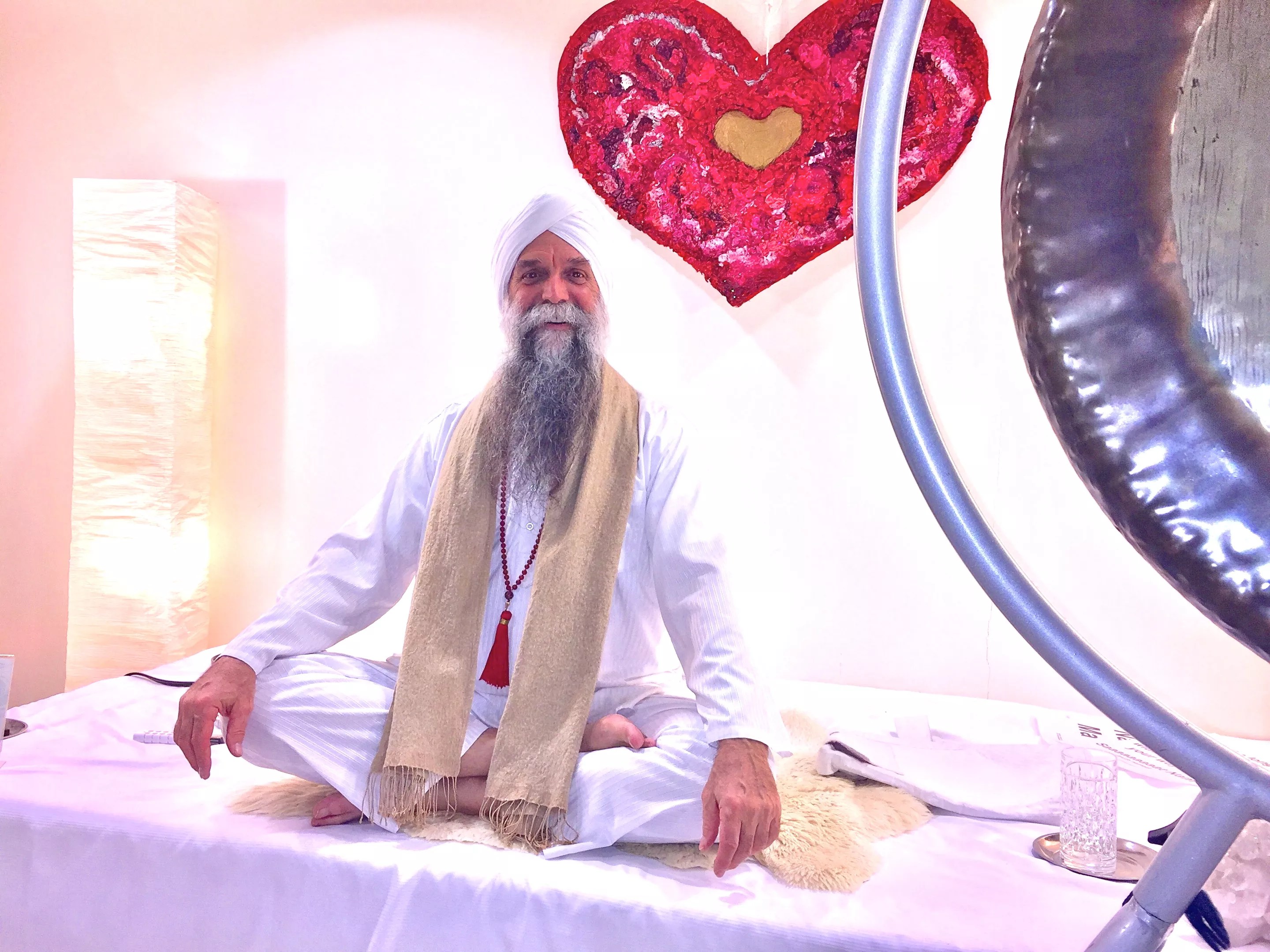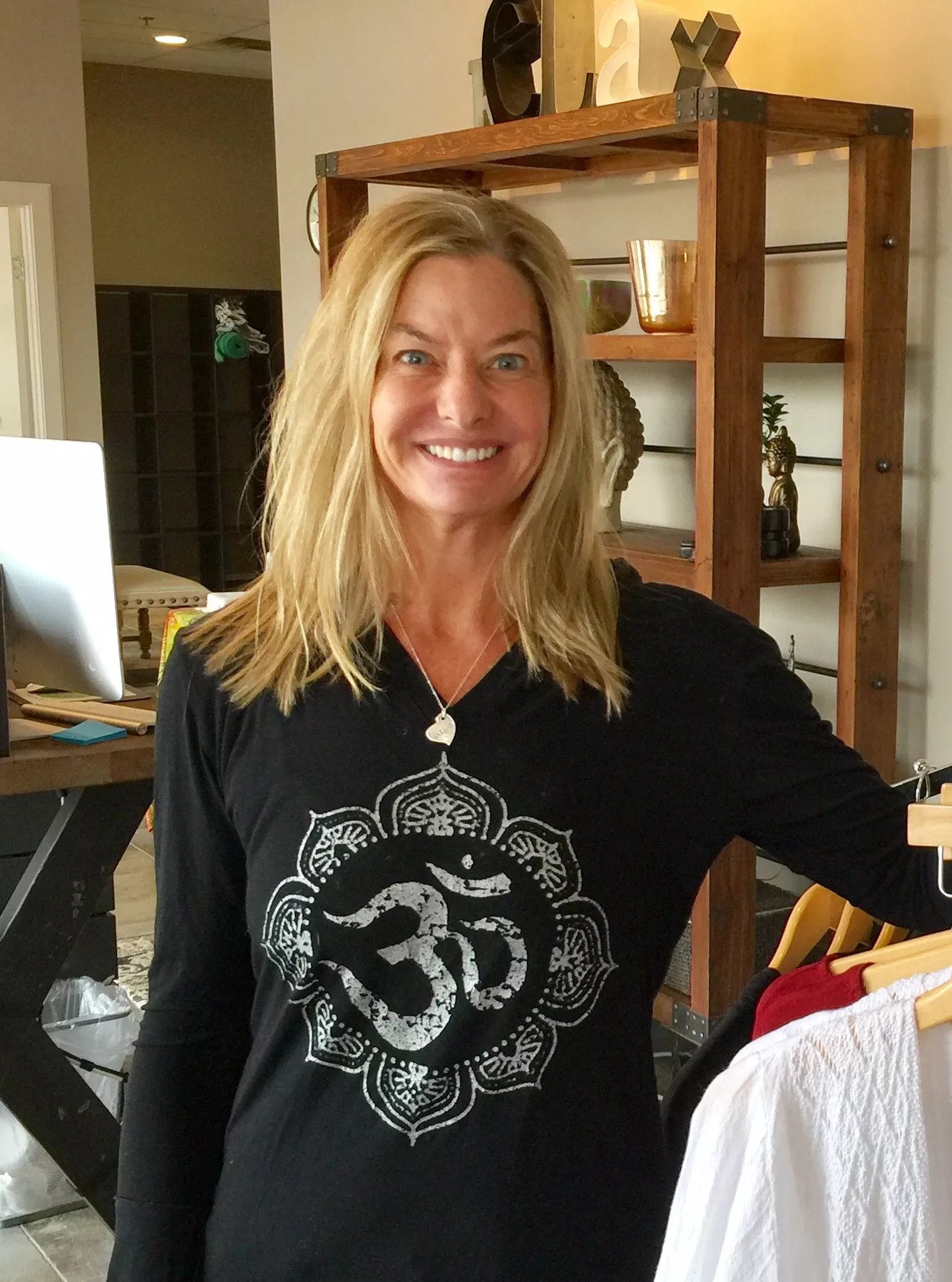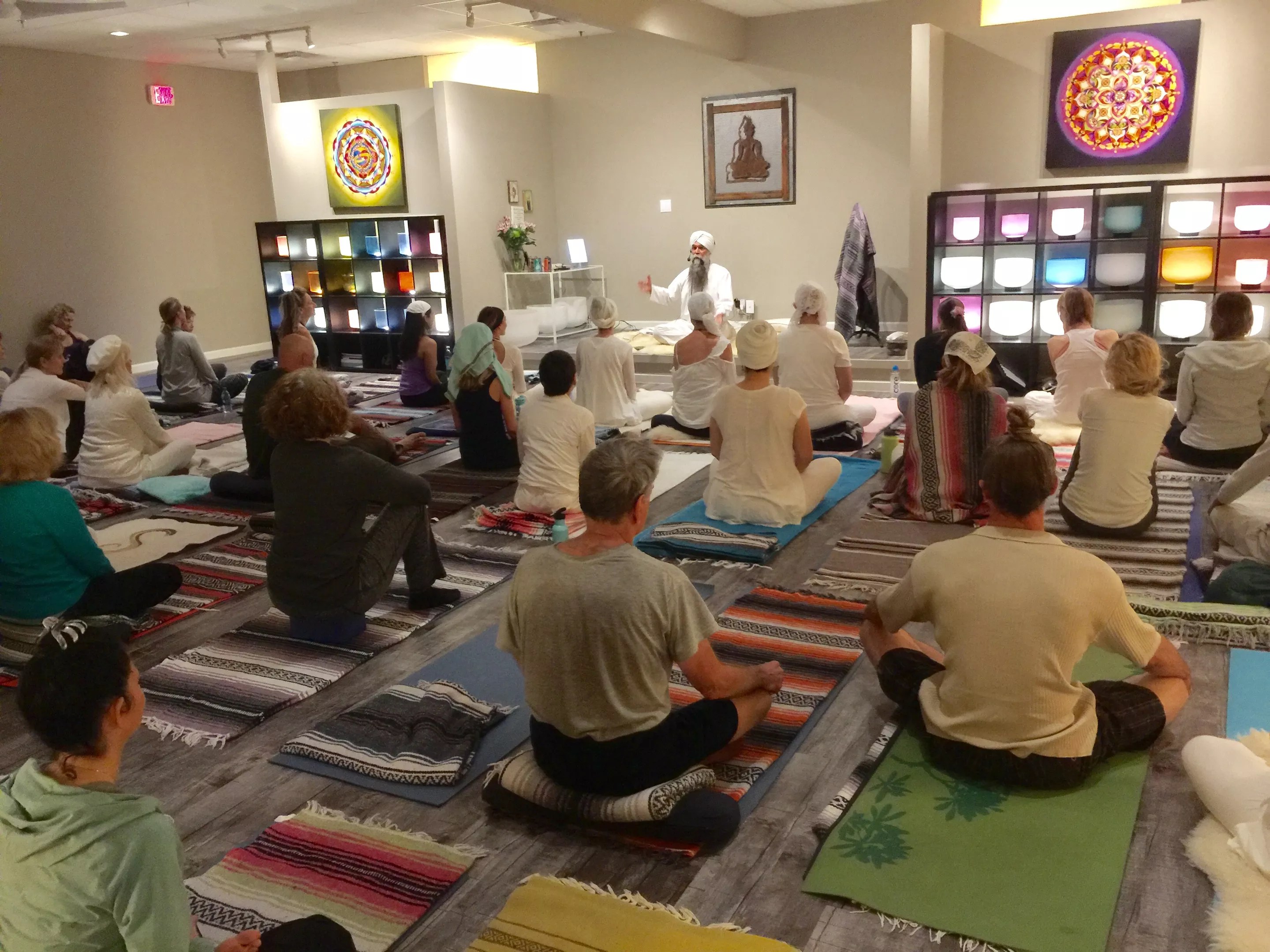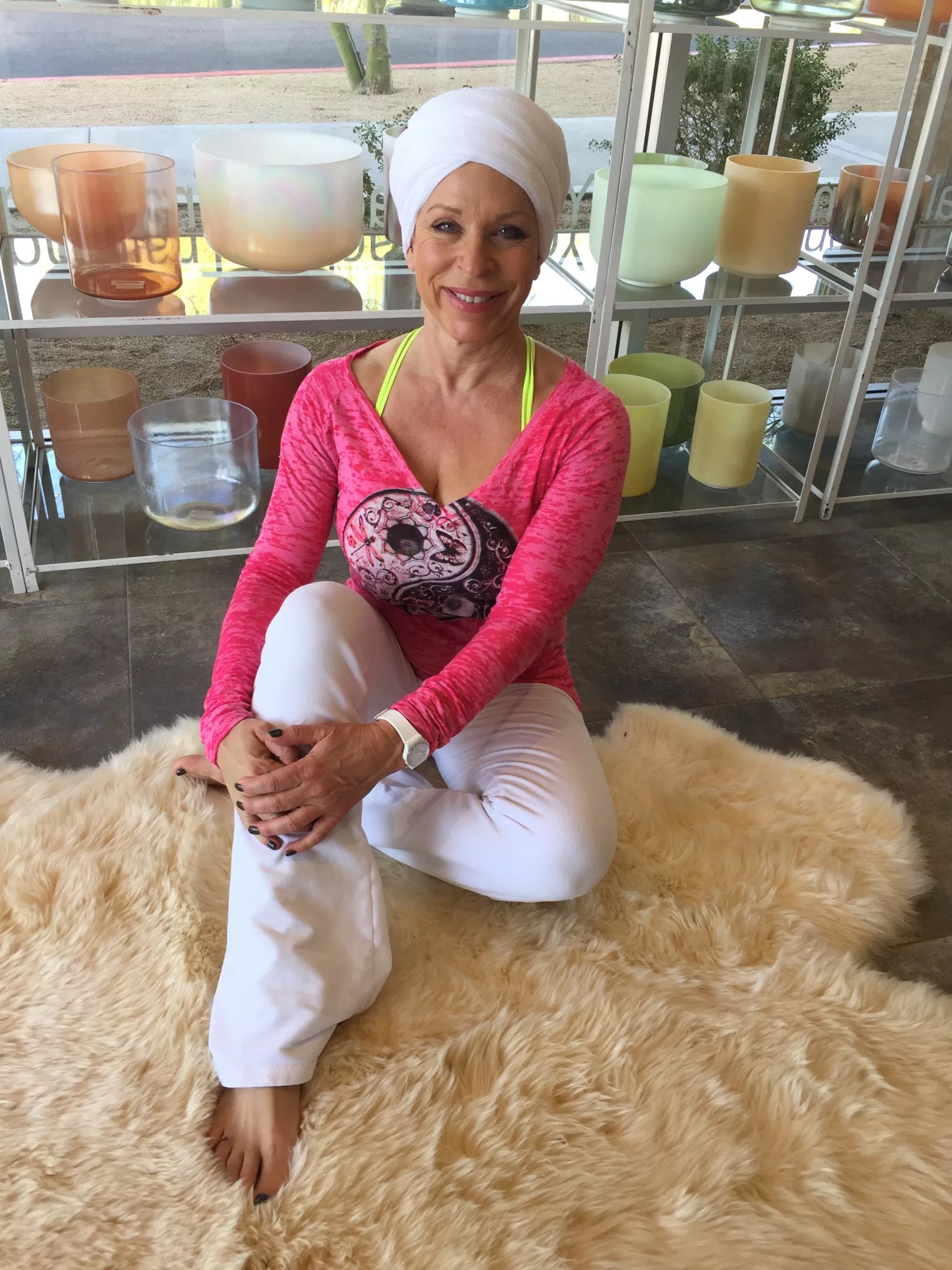
Colleen O’Donnell Pierce

Audio By Carbonatix
Kundalini yoga is not new. The practice originated thousands of years ago in India. But recently, celebrities from Russell Brand and Gwyneth Paltrow to Demi Moore have touted its benefits, and it has been making mainstream headlines in the Huffington Post and Yoga Journal.
Enthusiasts claim kundalini yoga can cleanse and detoxify the body, neutralize stress, rewire neural pathways in the brain to reduce the effects of past traumas, and give you a lasting, natural high.
There are currently certified instructors registered in 48 countries, including 434 teacher trainers and hundreds more registered instructors in 44 states across the U.S. (Full disclosure: The author of this piece practices and teaches kundalini yoga.) And while until recently kundalini yoga was mostly a well-kept secret, it actually has a nearly 50-year history in Phoenix.
And local interest in kundalini yoga appears to be on the rise. Phoenix-based teacher trainer Sevak Singh Khalsa has personally trained and graduated more than 400 kundalini yoga instructors in Arizona and neighboring regions in the past eight years. And to keep up with the rising demand for kundalini yoga classes, one of the Valley’s three kundalini yoga studios expanded in November 2016 to a 3,600-square-foot space in north Scottsdale that’s three times larger than its previous studio, which first opened in 2014.
“It just became so popular we had to grow. There was no other option,” says Ronee Kipnes, owner of Anahata Yoga, Sound and Energy Healing in Scottsdale, which features various forms of yoga, but focuses on kundalini yoga. “It took off really quickly and the kundalini yoga classes were always the most popular. People seemed to be very drawn to it. They were glad we had other modalities, as well, but the focus was always on kundalini yoga.”

Ronee Kipnes, owner of Anahata Yoga, Sound and Energy Healing in north Scottsdale moved her studio into a larger space in November to accommodate growing demand for kundalini yoga classes and training.
Colleen O’Donnell Pierce
Kundalini yoga was first brought to the United States from India by Harbhajan Singh Khalsa, known to kundalini yoga practitioners as Yogi Bhajan. Born in 1929 in the Punjab region of India that’s now part of Pakistan, Bhajan was the son of a medical doctor. According to biographers at the 3HO Foundation, which Bhajan himself founded, the master yogi felt called to bring kundalini yoga to the West.
Arriving in Los Angeles in 1969, Bhajan met a number of young hippies, whom he considered to be the spiritual seekers of that era. Per his own writings, Bhajan maintained that the experience of higher consciousness those seekers were attempting to find through drugs could be achieved by practicing kundalini yoga, which he believed would also simultaneously rebuild their nervous systems.
Bhajan predicted the current information overload and its effects on the human psyche and nervous system. Before Facebook, Bhajan said in a 2002 lecture, “The massive overload of information we will all be subjected to destroys the balance of the mind and creates conditions of unimaginable disorientation.”
Bhajan said people would attempt to use more sophisticated devices to sort the flood of information, but the overall impact would be to overtax the body’s nervous system.
“We will fight, withdraw, and fantasize more,” Bhajan continued. “Some of us will attempt to diffuse the impact of the flood of information with harmful adaptations like drug use and violence. It will push us beyond all the old frontiers of identity – home, neighborhood, country, values, and the natural rhythms of nature. Our old touchstones for forming an identity will fail, and we will have a pervasive identity crisis.”
Bhajan cited the rise of stress-related and psychological illnesses as a symptom of this lack of balance and called kundalini yoga a way to “quickly and effectively find the calm eye of this mental and social storm of change.”

In the early 1970s, roughly 140 kundalini yoga practitioners, including Singh, lived in this ashram at 326 East McDowell Road.
Nidhan Singh
A practice previously reserved for yogi mystics in India and only taught in secret, kundalini yoga debuted in Phoenix in the early 1970s. At that time, an ashram community of roughly 140 members was founded in central Phoenix at Third Street and McDowell Road. The local community of kundalini yogis practiced under the leadership of Bhajan until he passed away in 2004. The ashram relocated in 1979 to a Sikh gurdwara at Oak and Ninth streets (about a half-mile north of the first ashram), where it remained for nearly four decades until that building was torn down in 2016.
Since then, kundalini yoga classes have moved into more traditional yoga studios across the Valley.
Kundalini is a Sanskrit word that means “one that is coiled” and is used to describe a life force energy. Unlike other Eastern depictions of life force, kundalini energy is thought to be unique to each person, like DNA, and is traditionally pictured coiled like a snake at the base of the spine.
“Kundalini is the nerve of the soul, and every human being has that spark within them,” says Singh, a kundalini yogi since the 1970s who studied directly with Bhajan.
Per The Aquarian Teacher, the training manual for KRI-certified kundalini yoga instructors, one goal for practitioners is to bring their native kundalini energy up through the “chakras” (energy centers of the body depicted in various Indian philosophies as ranging from the base of the spine to the crown of the head), thereby unleashing the person’s full potential mentally, physically, and spiritually. According to the teachings, this awakening then allows them to fulfill their unique destiny – a non-empirical process referred to as “kundalini rising.”
“Eventually if you’re going to elevate, unify, and become enlightened and god-conscious, your kundalini will rise. It has to,” Singh says. “Yoga is the unification of body, mind, and spirit. And kundalini yoga is the fastest way to get there. It’s like a Lear jet that takes you to the you inside of you.”
Singh, 64, was first exposed to a kundalini yoga class at age 20, while working as a primary therapist in the behavior modification ward at the Arizona State Hospital in 1972.
“One of the patients I was working with wanted to take this yoga class. So I went with this guy and I got completely stoned from the class,” Singh says. “I got so elevated. It was shocking to me, because I had a recreational substance use, as many of us did back in the late ’60s and early ’70s, and I found that external stimulus paled in comparison to my experience doing kundalini yoga. And it was like, ‘Whoa! I can get this high, this elevated, and not be stupid the next day? And for free and legally!’ So that’s really what hooked me, when I realized I can just go do this and get high and be healthy.”

Singh’s “Sunday Connection” kundalini yoga classes average 50-60 students each week.
Colleen O’Donnell Pierce
On paper, what makes kundalini yoga different from other types of yoga popular in the West is that it incorporates meditation, chanting of mantras, pranayama (breath control), and eye focus in addition to specific sequences of postures, breathing techniques, and movement (sometimes gentle, sometimes strenuous), known as kriyas.
By activating trigger points in the body, the postures, movements, eye focus, and mantras stimulate glandular activity, various nerve centers, and the sympathetic and parasympathetic nervous systems, which regulate the immune system and other core bodily functions, in addition to working muscles and the cardiovascular system.
There are several thousand kriyas within the kundalini yoga repertoire as it was taught in the U.S. by Bhajan. These include titles such as Stress Set for Adrenals and Kidneys, Disease Resistance and Heart Helper, and Kriya to Conquer Pain.
“The teachings, tools, and technologies that people receive in kundalini yoga are really able to be incorporated into your day-to-day life,” says Kipnes. “So as life unfolds and things are coming at you, it gives you a stronger nervous system to be able to deal with it. It gives you the ability to have an immediate experience when you’re in a class. You start with the breathing and chanting, and it has a direct effect on the glandular system, and you just feel good. You walk away from the experience feeling well. It’s very quick.”
According to the Kundalini Research Institute, an international organization that compiles scientific research on the effects of kundalini yoga on the human body and brain, kundalini yoga has shown initial promise in preliminary studies for improving conditions as diverse as addiction, infertility, digestive problems, and psychiatric disorders. Further study is needed to draw any definite conclusions.
Kipnes was surprised herself at how much demand there has been for the kundalini yoga classes.
“Quite honestly, when I first opened I wondered, ‘Is this going to be too weird for north Scottsdale?’ Like, ‘Oh my God, people have turbans on their heads and they’re chanting.’ Is this just far too much for this culture that we’re in up here? You know, this isn’t an ashram community, so I didn’t know if it would be widely accepted,” Kipnes says.

Crystal singing bowls are among the sound healing modalities sometimes paired with kundalini yoga classes at Anahata Yoga, Sound and Energy Healing.
Colleen O’Donnell Pierce
In addition to finding kundalini yoga classes consistently the most in demand at her studio, Kipnes has had more than 80 people register over the past three years to attend kundalini yoga teacher training courses, another factor in her decision to move to a larger studio.
“There just wasn’t enough space. We were having to cancel classes and rearrange things to accommodate the teacher training programs. The vision came very clearly that there needed to be separate spaces so we could hold teacher trainings simultaneously with regular classes and keep those things on the schedule, plus expand into kids’ yoga and do more special events,” says Kipnes, who also notes that the community of practitioners is another draw at her studio.
“It helps contribute to and build community and people are really seeking and needing community right now,” she says. “A lot of people these days are feeling very disconnected. Social media, which is supposed to bring you together, actually tends to make many people feel more disconnected from everyone. Coming into this practice instantly connects you with an entire community.”
Liv Nam Kaur, a kundalini yoga instructor since 2010 who’s now teaching at Inner Vision in Tempe, is a behavioral health case manager at Banner Health by day.

Behavioral health case manager and yoga instructor Liv Nam Kaur stopped taking antidepressants after establishing a daily kundalini yoga practice.
Courtesy of Liv Nam Kaur
“At the point I found the [kundalini yoga] practice, I was pretty clinically depressed, and had been so most of my life,” says Kaur. “Many people are on antidepressants, and I don’t recommend they go off them – but I’m off of all those medications and I took a lot of them, thinking those pills would help me. I stayed on them for years out of fear. As I got stronger in my practice and brave enough, I realized I didn’t need them. It took me about four years, but then with the blessing of my prescribing doctor, I was able to stop taking them.”
Kaur also sees technology backlash as a factor in the global surge of interest in kundalini yoga.
“The yogi who brought this yoga to the U.S. was very predictive of the times we’re living in: the current political climate, the type of stress, and electronic technology long before it existed,” Kaur says. “And he was telling people in the ’70s and ’80s, that people will need this yoga to stay sane in very insane times, so that when all the craziness of the world is conspiring on us to collapse in depression or despair, we have an inner strength that this yoga gives us.”
Kaur also notes that while kundalini yoga is a spiritual practice and not a religion, the spiritual component may be part of the draw for new and continuing students.
“I think that’s why it’s going like wildfire in China, South America, Italy, and our country more so than when Yogi Bhajan was alive, because it works on that stress in your nervous system,” Kaur says. “It’s also really popular in places where there’s been a culture of devotion. You can be any spiritual stripe: Buddhist, Catholic, you name it. Even an atheist. But going deeply inside, becoming humble, and having this sense of devotion is pretty lacking in what we see around us. And people are starving for it – almost like they’re malnourished. They need their soul, because everything around them is seeming so empty.”
According to Singh, the main purpose of practicing kundalini yoga is simply to be happy.
“We earn this right to have a human existence and we have the right to be happy,” Singh says. “Every emotion you feel is resultant of thinking. And when you understand how you can apply kundalini yoga and meditation into the cycle of that thought, you become very dangerous, because you are self-determined, self-initiated. I’ve been all over the world, searching for something that could make me feel better than this, and it just isn’t out there. This is it.”